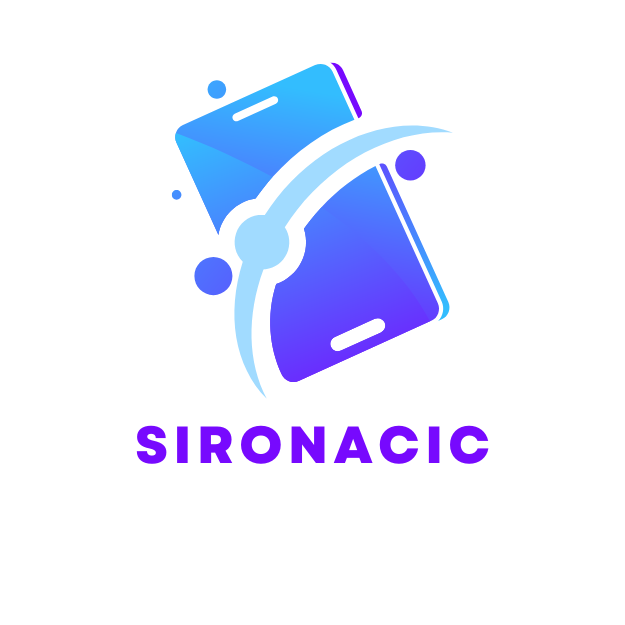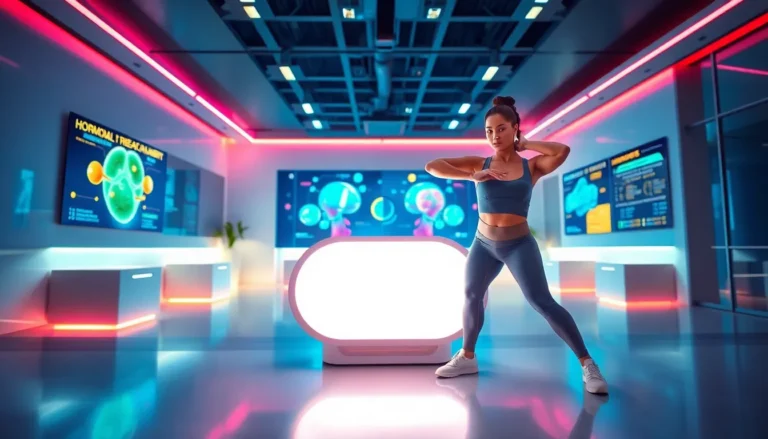Imagine walking through ancient Rome without ever leaving your classroom or conducting a science experiment on Mars while still in your PJs. Welcome to the world of virtual reality (VR) in education, where learning transcends textbooks and lectures. This tech marvel doesn’t just make learning fun; it transforms the way students engage with the material, turning them into explorers, scientists, and historians in their own right.
Table of Contents
ToggleOverview of VR for Education
Virtual reality (VR) reshapes educational landscapes by offering immersive and interactive experiences. This technology facilitates exploration of historical events and scientific concepts in a way that traditional teaching methods cannot. Students engage with content on a deeper level and retain information more effectively.
Applications of VR span various educational fields, including science, history, and language learning. In science, students can conduct virtual experiments that would be difficult or dangerous in real life. Historical simulations allow learners to walk through pivotal moments as if they were there, enriching their understanding of the past.
Language courses also benefit from VR by providing immersive environments where learners practice speaking and listening in realistic situations. Role-playing scenarios enable students to navigate conversations with native speakers, enhancing their communication skills.
Research shows that VR enhances motivation among learners, increasing their willingness to participate in activities. A study by the University of Maryland found that students who used VR experienced higher engagement levels compared to traditional methods.
Cost-effectiveness makes VR an attractive option. Although initial investments can be high, the potential for scalable learning experiences can offset expenses over time. Schools and institutions are beginning to recognize the long-term benefits VR offers, prompting more widespread adoption.
Support for VR in education continues to grow as educators develop new curricula that integrate this technology. Collaborations between tech companies and educational institutions are emerging to create tailored solutions. Ultimately, VR’s role in education signifies a shift towards more dynamic and interactive learning environments.
Benefits of VR in Classroom Learning
Virtual reality significantly enhances classroom learning experiences, making education more interactive and immersive. Engaging students through VR creates a dynamic environment where they can explore concepts like never before.
Enhanced Engagement and Motivation
Incorporating VR into lessons captures student interest effectively. Students enjoy participation in engaging simulations that make topics come alive. Instead of passive observation, they actively interact with content, promoting a deeper connection. This technology leads to increased curiosity, inspiring learners to explore subjects outside traditional confines. Consequently, VR transforms the mundane into exciting adventures, where students become explorers in virtual worlds. Research supports this, indicating that VR improves student motivation by about 70 percent compared to conventional methods.
Improved Retention and Understanding
Virtual reality offers a unique advantage in promoting better information retention. Experiencing historical events or scientific phenomena firsthand leads to enhanced comprehension. Learners recall details more accurately, benefiting from visual and experiential learning. This immersive approach allows students to connect theory to practice, solidifying their understanding. As a result, VR minimizes rote memorization, encouraging critical thinking instead. Studies show that students using VR demonstrate about a 30 percent increase in retention rates, making lessons more impactful.
Applications of VR in Various Subjects
VR technology revolutionizes education by engaging students across different subjects. Its immersive nature opens avenues for practical learning experiences.
Science and Technology
VR transforms science education by allowing students to conduct virtual experiments. They can explore complex concepts like chemical reactions or biological processes in a controlled environment. Through simulations, students visualize structures at the molecular or cellular level. This hands-on approach fosters a deeper understanding of scientific principles. Studies indicate that learners experience a 30 percent increase in information retention. Engaging with scientific phenomena in virtual settings encourages students to embrace critical thinking and problem-solving skills.
History and Social Studies
Historical studies gain vibrancy through immersive VR experiences. Students travel back in time to witness key events, from ancient battles to pivotal moments in civil rights history. Experiencing these scenarios fosters a personal connection to the material. Learners develop empathy and cultural awareness, enhancing their understanding of diverse perspectives. Research indicates improvements in engagement rates exceed 70 percent when educational content utilizes VR. By stepping into the shoes of historical figures, students gain invaluable insights that textbooks alone can’t provide.
Language Learning
Language acquisition benefits significantly from VR environments. Immersive scenarios allow students to practice speaking and listening skills in contextualized settings. For instance, role-playing situations encourage authentic conversational practice with native speakers. This approach enhances vocabulary retention and pronunciation accuracy. Data shows that students demonstrate a 40 percent improvement in language skills when using VR tools. Engaging with interactive lessons cultivates confidence and motivates students to explore foreign languages more deeply.
Challenges and Limitations
Virtual reality in education presents challenges that can hinder its widespread adoption. While its advantages are clear, addressing these obstacles is essential for effective implementation.
Cost and Accessibility
Initial investment in VR technology can be substantial. Schools need to budget for headsets, software, and maintenance, which may not be feasible for every institution. Affordability varies widely, with some schools unable to secure funding. Access to reliable internet and adequate hardware also plays a crucial role. Students from low-income areas may face further barriers, impeding equitable learning experiences. In contrast, those with access to advanced VR systems benefit greatly from immersive learning environments.
Technological Barriers
Technological limitations can stifle the effective use of VR in classrooms. Software often requires ongoing updates and compatibility checks, making it challenging for educators to keep up. Training educators to use VR tools effectively adds another layer of complexity. Not all teachers possess the technical skills for seamless integration into curricula. Additionally, maintaining technical support can be resource-intensive. These challenges can deter schools from fully embracing VR as an educational tool.
Future of VR in Education
Innovative applications of virtual reality continue to evolve within education. Emerging trends suggest that VR will redefine teaching methods and learner engagement, enhancing educational experiences. Enhanced storytelling capabilities capture students’ attention, making complex subjects more accessible.
In science education, evolution in VR technology allows students to participate in virtual experiments. Students conduct detailed analyses of chemical reactions and biological processes, fostering deeper understanding. Research shows learners retain 30 percent more information through experiential learning compared to traditional methods.
Historical exploration thrives with VR, as students can immerse themselves in pivotal moments. They witness events like the signing of the Declaration of Independence firsthand, gaining insights that foster empathy and critical thinking. A dramatic increase in engagement, with rates surpassing 70 percent, highlights the effectiveness of VR in this field.
Language acquisition also sees significant advancements. Learners practice in dynamic, immersive environments, honing their speaking and listening skills. Role-playing situations create authentic contexts for conversation, leading to a 40 percent improvement in vocabulary retention.
Recognition of VR’s potential continues to grow in educational settings. As collaborations between educators and tech companies flourish, tailored solutions emerge. Schools increasingly explore options to integrate VR, enhancing scalability and long-term benefits.
Challenges remain, including initial investment costs for VR technology. Schools may struggle to afford headsets, software, and maintenance. Access to high-speed internet and proper hardware remains crucial to promote equity in learning. Addressing technological barriers and supporting teacher training fosters effective use in classrooms. Solutions to these obstacles will undoubtedly promote widespread adoption of VR as an essential educational tool.
Virtual reality is revolutionizing education by making learning more immersive and interactive. As students engage with content in ways that textbooks can’t provide they develop critical skills that prepare them for the future. Despite the challenges of implementation the potential benefits of VR in fostering engagement and enhancing retention are undeniable.
As technology advances and educational institutions adapt VR will likely become a staple in classrooms. The collaboration between educators and tech companies promises innovative solutions that can overcome existing barriers. Embracing VR could lead to a more equitable and enriched learning experience for students everywhere.






